For the Common Good
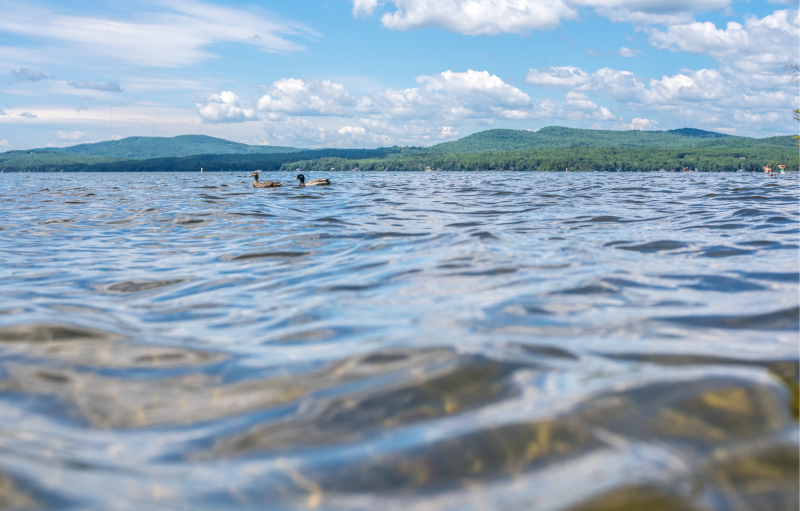
Twenty miles upstream of Portland, Maine, lies Sebago Lake, the state’s deepest and second-biggest body of water. The lake provides drinking water to 16 percent of Maine’s population, including residents of Portland, the state’s largest city. It holds nearly a trillion gallons of clear, cold water. Portland’s water utility has earned one of only 50 federal filtration exemptions in the country, which means the water, although treated to ward off microorganisms, does not have to be filtered before it flows into the city’s taps.
“The primary reason it’s so pure is that most of the watershed is still forested,” says Karen Young, director of Sebago Clean Waters, a coalition working to protect the area. Eighty-four percent of the 234,000-acre watershed is covered in forests—a mix of pine, oak, maple, and other species that filter water and help make this system work so well. But those forests face threats. Between 1987 and 2009, the watershed lost about 3.5 percent of its forest cover. Just 10 percent of the area was conserved. In 2009, 2014, and 2022, the U.S. Forest Service ranked the Sebago watershed as one of the nation’s most vulnerable, due to threats from development.
Over the last couple of decades, conservation groups began to worry about the future of this critical resource—and the Portland Water District (PWD) was worried, too. An independent utility that serves more than 200,000 people in Greater Portland, PWD purchased 1,700 acres around the water intake in 2005 and adopted a land preservation policy in 2007. In 2013, it established a program to help support conservation projects undertaken by local and regional land trusts.
Most of these organizations were working independently until 2015, when The Nature Conservancy brought them together to develop a conservation plan for the lake’s largest tributary, the Crooked River. That convening evolved into the Sebago Clean Waters coalition, which includes nine local and national conservation groups, the water district, and supporters from the business community. As they explored creative ways to protect the lake and the land around it, the idea of creating a water fund surfaced.
Water funds are private-public partnerships in which downstream beneficiaries like utilities and businesses invest in upstream conservation projects to protect a water source—and, by extension, to ensure that the supply that reaches users is as clean and plentiful as possible. In 2016, Spencer Meyer of the Highstead Foundation—one of the groups that founded Sebago Clean Waters—took a trip to Quito, Ecuador, with The Nature Conservancy. The group visited with representatives of the Fund for the Protection of Water for Quito (FONAG), a leading example of this novel source water protection model. Meyer saw some similarities to the situation in Maine.
“We thought, ‘What if we could bring the partners together as a whole system to accelerate the pace of conservation?’” he says. “And could we apply that model to a healthy watershed, to take a proactive position and build this financial model in a place where it isn’t too late?”
A water fund is a financial tool, but it’s also a governance mechanism and management framework that brings multiple stakeholders to the table. Quito’s fund, launched in 2000, is the longest-standing one in the world. Similar projects have proliferated across the globe, particularly in Latin America and Africa. According to The Nature Conservancy, more than 43 water funds are operating in 13 countries on four continents, with at least 35 more in the works.
The Importance of Healthy Watersheds
Globally, clean water is our most important resource. When upstream watersheds are healthy, they collect, store, and filter water. That provides a resource that can, in addition to meeting basic hydration and sanitation needs, support climate change adaptation, food security, and community resilience. When watersheds are not healthy, sediment clogs up water filtration systems, pollutants flow downstream, and ecosystems become degraded.
That difference is crucial. According to a Nature Conservancy report, more than half the world’s cities and 75 percent of irrigated agriculture are likely already facing recurring water shortages. Climate change is fueling extreme drought, from the U.S. West to Australia, and pollution from sources like nitrogen and phosphorus has grown ninefold in the last half century. In many cities, the source of water is far away and under different jurisdiction, which makes regulation and treatment challenging.
The Nature Conservancy also estimates that 1.7 billion people living in the world’s largest cities currently depend on water flowing from fragile source watersheds hundreds of miles away. That puts strain on both ecological systems and infrastructure, and demand is only growing. By 2050, two-thirds of the global population will live in those cities. That level of demand simply may not be sustainable, especially in a rapidly changing climate. Water funds can be creative, multilayered solutions to two urgent, interlocking issues: water quality and quantity.
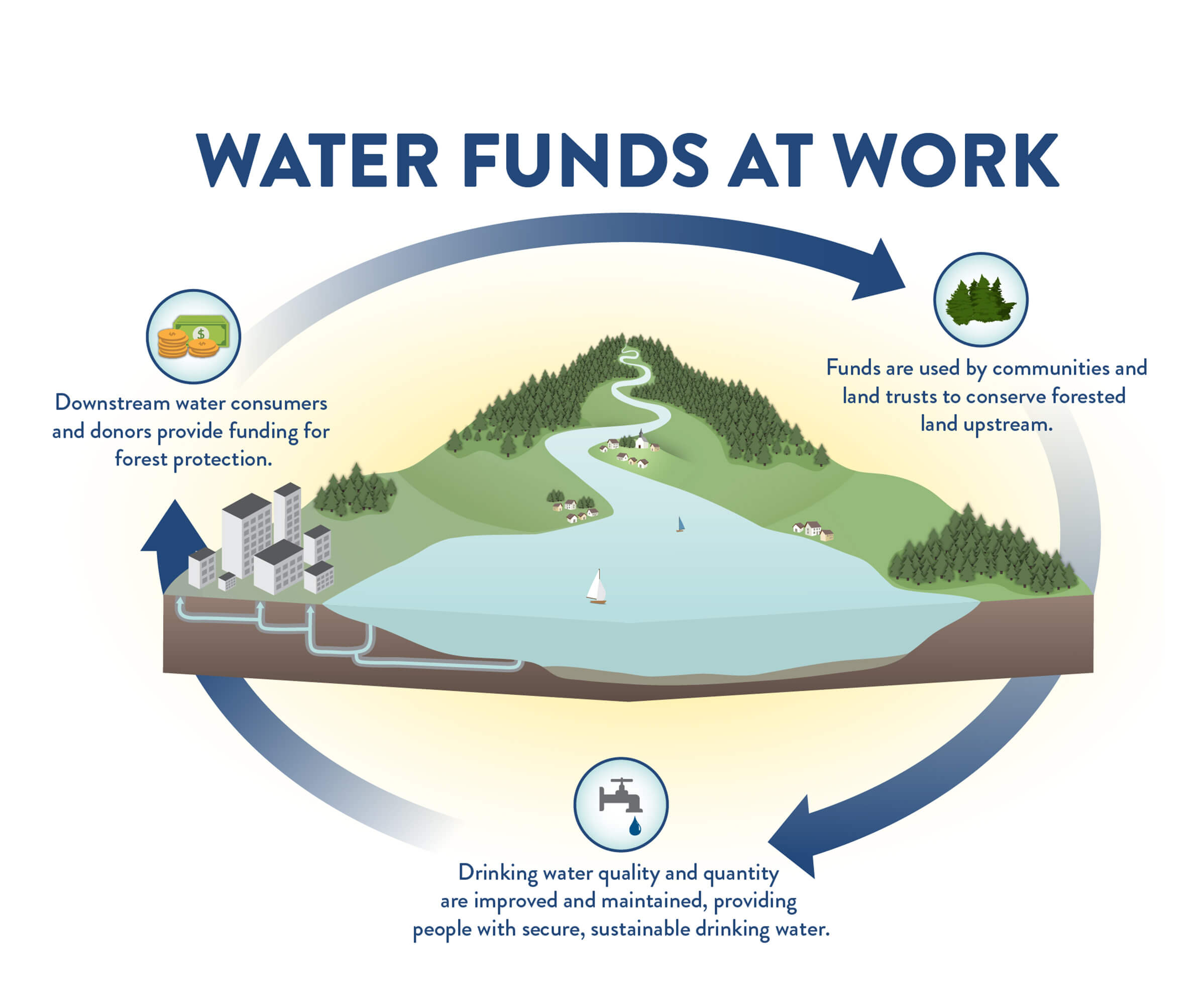
“Water funds sit at the intersection of land, water, and climate change,” says Chandni Navalkha, associate director of Sustainably Managed Land and Water Resources at the Lincoln Institute of Land Policy. “They are an example of the kind of cross-sectoral, multi-stakeholder governance and collaboration that is required to maintain water security in a changing climate.”
Navalkha recently oversaw the development of a case study of the Sebago Clean Waters initiative, which the Lincoln Institute will distribute through its International Land Conservation Network. Changing the way water has been historically managed isn’t easy, particularly because it’s tangled up in issues like city planning, economic growth, and public health. So groups like the Lincoln Institute and The Nature Conservancy are working to spread the water fund model by showing the science behind source water protection, giving communities tools to find ecosystem-specific solutions, and sharing the experiences of places like Portland and Quito.
Lessons from Quito
In the late 1990s, officials in the Metropolitan District of Quito started to worry that they were running out of water to support the city’s 2.6 million residents. The upstream ecosystems that filled the city’s aquifers were eroding, and those impacts were trickling downstream.
A full 80 percent of the city’s water supply originated from protected areas within its watershed: the Antisana Ecological Reserve, Cayambe Coca National Park, and Cotopaxi National Park. “But they were only paper parks,” says Silvia Benitez, who works for The Nature Conservancy as water security manager for the Latin American Region. Instead of being protected, the area’s páramos—biodiverse high-altitude grasslands that are home to a range of rare endemic species and filter the upstream water supply—were facing multiple threats from livestock grazing, unsustainable agriculture, and construction.
Where conservation was an option, lack of funding made it difficult to achieve. Benitez says water managers knew the situation needed to be addressed, so the Municipal Sewer and Potable Water Company of Quito and The Nature Conservancy set up a fund to support the upstream ecosystem with $21,000 in seed money. Over the next four years they built a board of public, private, and NGO watershed actors, including Quito Power Company, National Brewery, Consortium CAMAREN, which provides social and environmental policy training, and the Tesalia Springs Company, a multinational beverage corporation. All of those stakeholders had a vested interest in water, and each contributed to the trust every year.
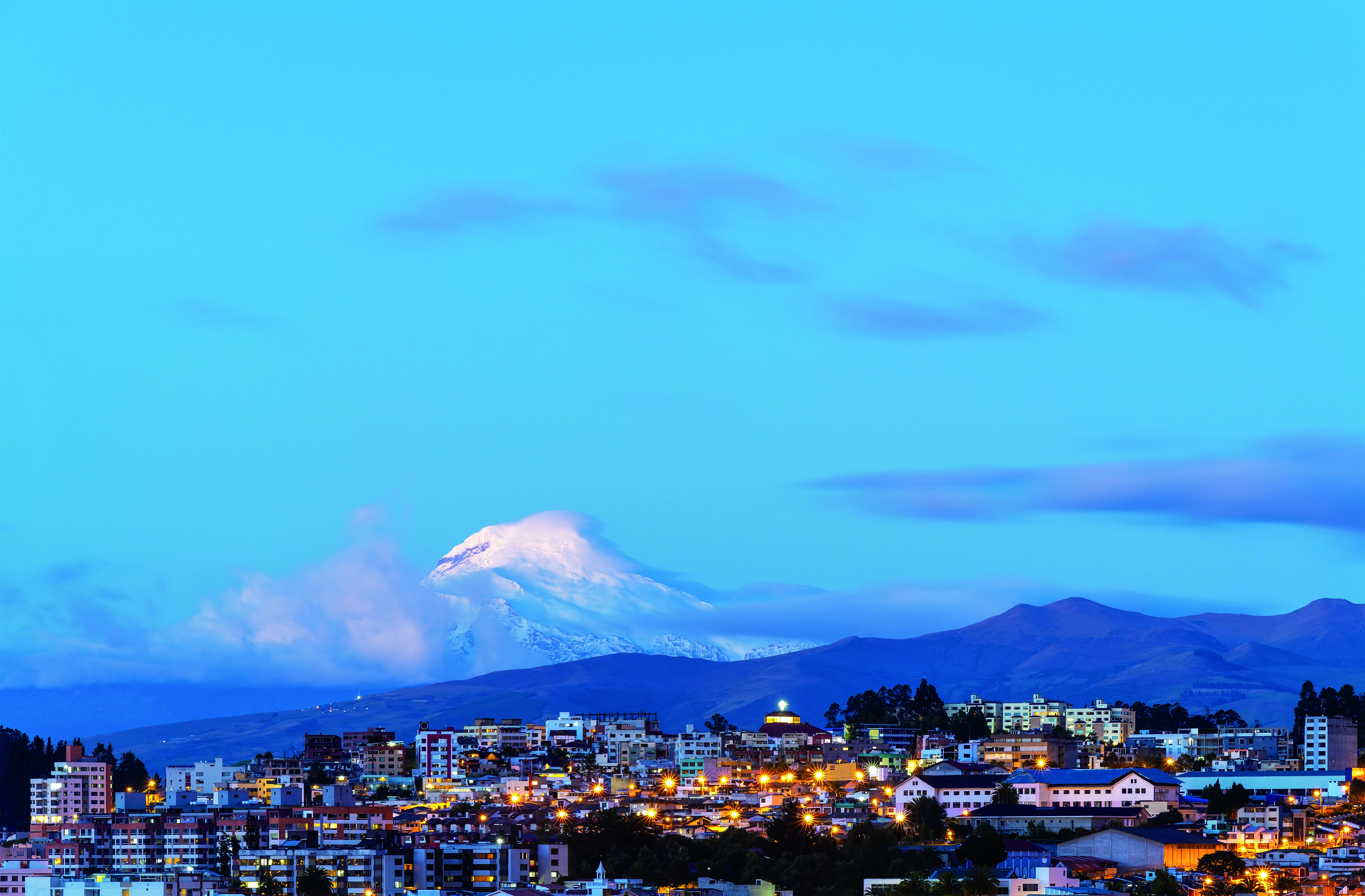
background. Credit: SL_Photography via iStock/Getty Images Plus.
Today, FONAG is regulated by the Securities Market Law of Ecuador and has a growing endowment worth $22 million. That funding is used to support upstream environmental projects like agricultural training and plant restoration in the páramos, which helps limit sedimentation.
“It’s a financial mechanism that harnesses investments from private and public sectors to protect and restore forests and ecosystems,” says Adriana Soto, The Nature Conservancy’s regional director for Colombia, Ecuador, and Peru. It’s also a forward-thinking way to manage water, says Soto, who was previously vice minister of Environment and Sustainable Development of Colombia and serves on the board of the Lincoln Institute.
Traditional water infrastructure—often called gray infrastructure—consists of pipes, water filtration systems, and chemical treatments, which are designed to purify water before it’s used. Gray infrastructure has long been relied on to ensure that water was potable and accessible. But it’s expensive and energy intensive, it can negatively impact wildlife and ecosystems, and it breaks down over time. Climate change is also posing threats to gray infrastructure; for instance, intensifying wildfires have led to increased sedimentation that chokes existing filtration plants, and virulent storm cycles have overwhelmed water treatment plants and other key pieces of infrastructure.
By contrast, green infrastructure is a water management approach that takes its cue from nature. Protecting upstream water sources is a form of green infrastructure investment that can help alleviate the pressure on water systems. There are almost as many ways to manage source water as there are water sources, but The Nature Conservancy’s “Urban Water Blueprint” report, which surveyed more than 2,000 watersheds, identifies five archetypes: forest protection, reforestation, agricultural best management practices, riparian restoration, and forest fuel reduction.
For instance, in the páramos above Quito, FONAG funded work to keep cattle off the most fragile grasslands and employed guards to stop rogue burning, because rebuilding the ecosystem was a top priority. Working across nearly 2,000 square miles, the fund has now protected more than 70,000 acres of land. This effort has benefited more than 3,500 families, providing funding to support sustainable, profitable farming operations.
“One of the beauties of the strategy is the social and economic results,” Soto says. “It’s not just tackling water regulation, it tackles climate change resiliency, biodiversity conservation, and it strengthens communities and creates gender equality. Most of the farms are led by women.”
Quito’s model inspired a swell of other water funds, many launched by The Nature Conservancy. Like these examples, each has place-specific strategies and funding structures:
- In 2021, the Greater Cape Town Water Fund invested $4.25 million in removing invasive plants such as gum, pine, and eucalyptus trees, which were absorbing an estimated 15 billion gallons of water each year from this drought-stricken watershed—equal to a two-month water supply. More heavily engineered solutions like desalination plants or wastewater reuse systems would have cost 10 times as much, The Nature Conservancy estimated.
- Since the Upper Tana–Nairobi Water Fund launched in 2015, organizers have worked with tens of thousands of the watershed’s 300,000 small farms to keep sediment from running down the region’s steep slopes into the Tana River, which provides water for 95 percent of Nairobi’s 4 million residents. The effort has reduced sediment concentration by over 50 percent, increased annual water yields during the dry season by up to 15 percent, and increased agricultural yields by up to $3 million per year. In 2021, the fund became an independent, Kenyan-registered entity.
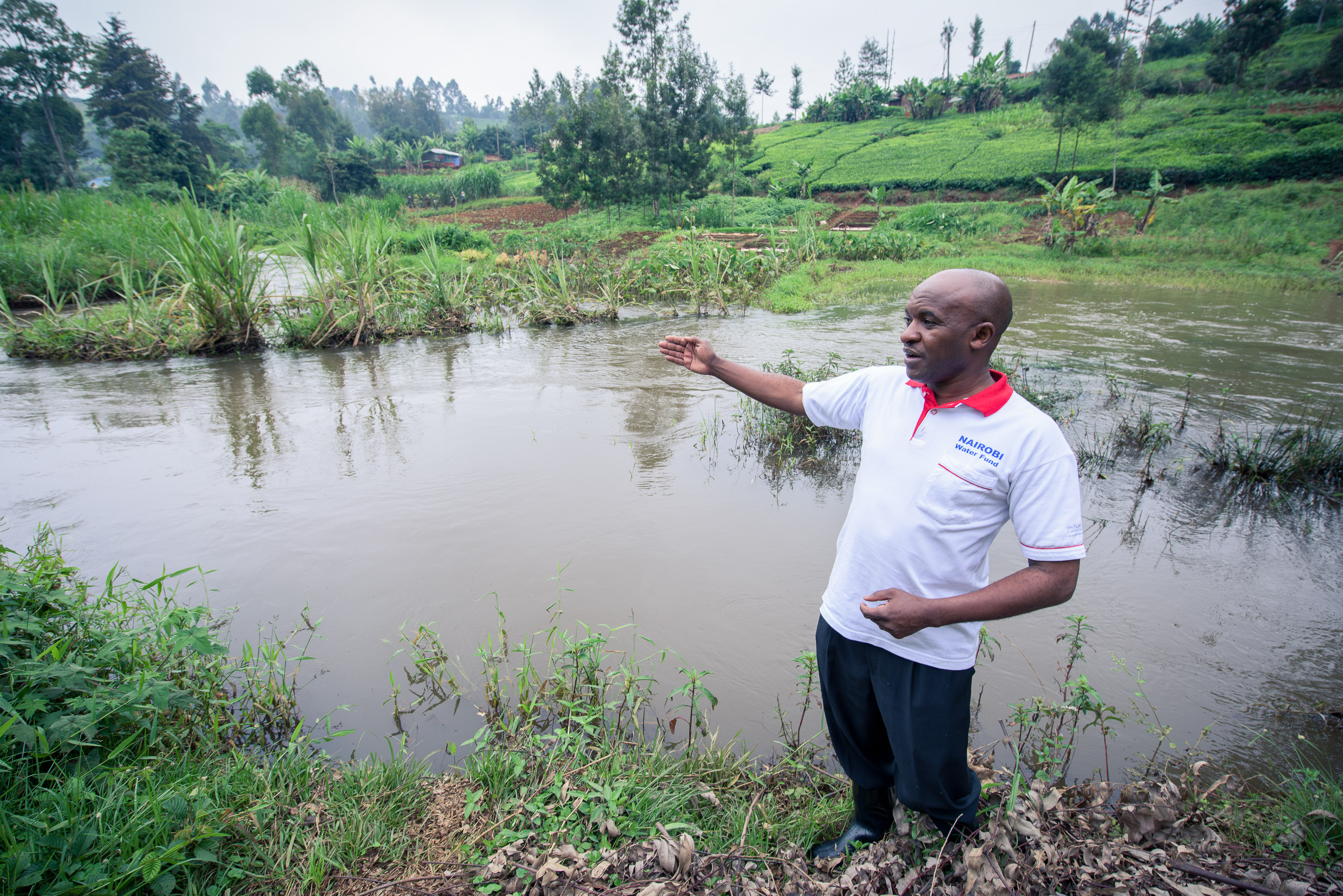
- The chemicals used in conventional bamboo production were polluting China’s Longwu Reservoir, which provides drinking water to two villages of 3,000 people. With an initial investment of $50,000, the Longwu Water Fund has helped local farmers adopt organic and integrated farming methods, now used in 70 percent of the area’s bamboo forests; promote ecotourism; and provide environmental education programs. In 2021, the water utility and local government agreed to pay into the fund on behalf of all water users.
Measuring Progress
Water funds support conservation projects that address a range of issues, including sedimentation and turbidity, nutrient build-up, and aquifer recharge. They also create social and environmental cobenefits, like protecting and regenerating habitat and sequestering emissions.
There are financial upsides as well: according to The Nature Conservancy, these investments in land management can provide more than $2 in benefits for every $1 invested over 30 years. One in six cities could recoup the costs of investing in upstream conservation through savings in annual water treatment costs alone.
Creating a water fund requires establishing governance systems, securing funding, identifying conservation goals, and defining benchmarks for measuring progress. “The business case development is hard: how much money, where is it going to be invested,” Soto says. Part of the business case is demonstrating the ecological and financial benefit of a fund. Soto says that’s the biggest challenge, because the benefits of conservation are long term, and don’t present themselves immediately.
“Water is difficult,” she says. “The challenge is not only time—we have to prove the case over many years—but also the aggregated result. How much of the water quality or quantity is because of the water fund?” She says FONAG struggled to find a way to quantify that, but researchers from San Francisco de Quito University helped set up a monitoring system that tracked water quality and quantity. That system has been used to mark progress and to show investors the direct benefits of this work.
“It’s not an easy sell, especially when you’re talking about committing funding for 50 or 70 years,” Benitez says. “But now, 20 years later, we have a lot of tools to show the benefits of nature-based solutions.”
She says that over those years, as The Nature Conservancy has introduced water funds in Colombia, Brazil, and other countries, they’ve learned to show potential partners concrete, measurable outcomes, and they’ve gathered tools and science to back up the work.
Scaling Up
Quito’s project has been considered a success over the years, but while building a single water fund is one thing, scaling the concept is another. As the water fund model has expanded to other countries and continents, challenges have come up. Changing the way water institutions think and operate takes time and negotiation. On the financial side, transaction and set-up costs can be high, and there’s no clear framework to compare the costs of nature-based solutions and gray infrastructure. Logistically, setting up a fund is different every time; Cape Town’s invasive species problem is different, for example, from Quito’s páramo protection needs.
To address these challenges, The Nature Conservancy—along with the Inter-American Development Bank, the FEMSA Foundation, the Global Environment Facility, and the International Climate Initiative—formed the Latin America Water Funds Partnership in 2011. The goal of the partnership, which is described in From the Ground Up, a recently published Lincoln Institute Policy Focus Report, is to scale the development of water funds in the region and provide a global model for how to help urban centers with source water protection.
A year after its launch, the partnership published a manual intended to provide resources that could guide work everywhere, even though each place faced specific challenges. “We have water funds that work with indigenous groups upstream, and we have other funds that have more large landowners, or small farmers,” Benitez says. “Our common purpose is to establish agreement with the groups and set up the responsibilities of the fund.”
That’s different in every case, but there are certain elements that can help make a water fund successful, like political involvement. For instance, Soto says that in Bogotá, Medellín, and Cartagena, fund organizers made sure to involve Colombia’s Ministry of Environment and Ministry of Housing, which is in charge of graywater. “Having them on board provides a platform to facilitate policy change, so we don’t start from scratch,” she says. The Nature Conservancy also offers strategies to engage companies, and to show them how supporting water funds reduces their long-term risk.
In 2018, The Nature Conservancy took the framework a step further, building a Water Funds Toolbox designed to guide potential partners through five stages of a project: feasibility, design, creation, operation, and consolidation. The toolbox, which leans on 20 years of accrued knowledge, shows how and where a water fund can help with water quality and availability, and provides a framework for the financial and conservation side of planning, too.
Maine Adopts the Model
In Maine, the members of Sebago Clean Waters took that toolbox and ran with it. “From the very beginning, we strived to design Sebago Clean Waters as a replicable model for other coalitions, regions, and water funds to learn from,” said Meyer, of the Highstead Foundation.
The coalition assessed the fund’s feasibility, commissioning a study by the University of Maine. The study found that reducing area forest cover by even 3 percent could noticeably increase pollutants. If forest cover decreased by 10 percent, it would cause the watershed to fall below federal filtration standards, the study said: “Protecting the filtration-avoidance waiver saves PWD and its customers an estimated $15 million per year in expected additional annual filtration plant costs.”
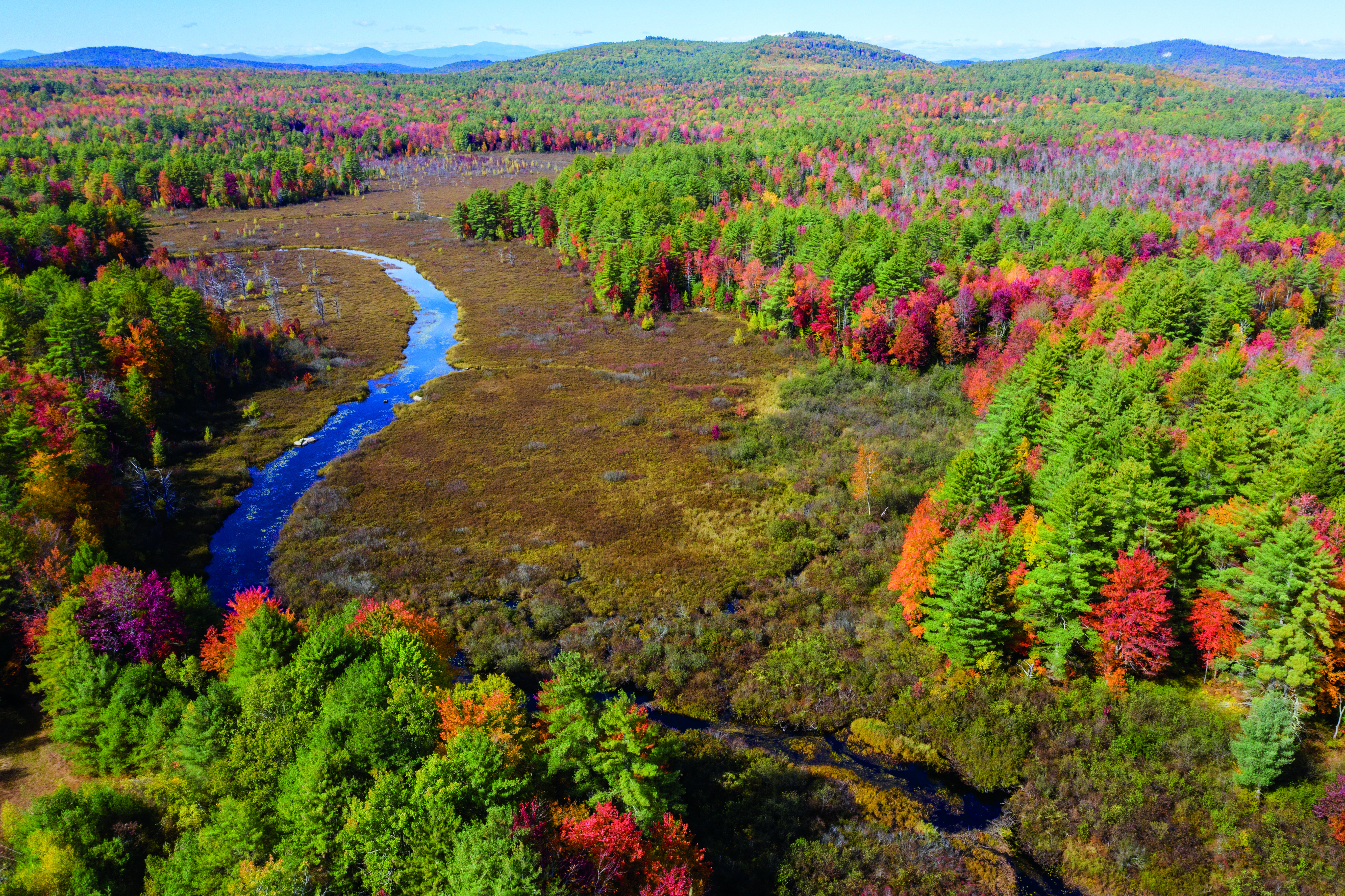
The economic argument was strong. The researchers found that every dollar invested in forestland conservation is likely to yield between $4.80 and $8.90 in benefits, including the preservation of water quality. If a filtration plant became necessary, however, PWD would need to increase water rates by about 84 percent to offset the costs of construction. There were ecological benefits to conserving the watershed, too, like providing habitat for trout and salmon, reducing erosion, and managing floods.
Sebago Clean Waters came up with a plan to ensure that a total of 25 percent of the watershed—35,000 acres—was conserved over the course of 15 years. They started with projects like the 1,400-acre Tiger Hill Community Forest in the town of Sebago. That tract was protected through a partnership between the Loon Echo Land Trust, a member of the coalition that has worked to protect the northern Sebago Lake region since 1987, and the Trust for Public Land. In 2021, Sebago Clean Waters announced its participation in a deal that would protect more than 12,000 acres in Oxford County, including the headwaters of the Crooked River, the lake’s main tributary. The amount of protected land in the watershed has increased from 10 percent to 15 percent.
Land conservation isn’t cheap or easy, especially in New England, where much of the lakeside land has long been in private hands. Achieving the water fund’s goals will take an estimated $15 million. But the fund is gaining momentum: building on an initial capacity-building grant of $350,000 from the U.S Endowment for Forestry and Communities; private and corporate funding; and a commitment by the Portland Water District to provide up to 25 percent of funding for each watershed conservation project that meets its criteria, the coalition recently landed an $8 million Regional Conservation Partnership Program award from the USDA.
Local businesses have also stepped up. In 2019, Portland’s Allagash Brewing offered to donate 10 cents from every barrel of beer it brewed, a total of about $10,000 a year. Allagash was the first of about 10 companies—including four other breweries—that have joined the coalition. MaineHealth, a statewide hospital network, just got involved as well.
“Drinking water is so compelling, it’s not a hard sell to talk to people about protecting it—particularly the breweries, because beer is 90 percent water,” Young says. “They understand the benefit as a business and as a community member.” She’s been surprised at the reasons so many partners have come on board. Many aren’t doing it because of their bottom line; they’re concerned with sustainability, and with supporting the communities where their employees live.
Sebago Clean Waters has accomplished a great deal, but its members are very aware of the time-sensitive need to protect this relatively pristine resource. After all, conserving land and water is easier than restoring them. Once a clean water source is gone, it’s hard to bring back.
As the water fund model spreads, it’s illustrating the real potential of upstream-downstream partnerships to make meaningful change. This work is not simple or immediate, but it can have lasting positive impacts in watersheds and communities around the world. Meyer said the model holds great promise: “It’s powerful to see how far a trust-based partnership can go.”
Heather Hansman is a Colorado-based journalist and the author of the book Downriver. She’s a Registered Maine Guide and a lover of the state’s rivers.
Lead image: Sebago Lake, Maine. Credit: Phil Sunkel via iStock/Getty Images Plus.